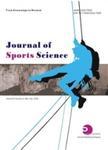Popular Horse Stories and the Invention of the Contemporary Human-Horse Relationship through an Alter Ego Paradigm
Popular Horse Stories and the Invention of the Contemporary Human-Horse Relationship through an Alter Ego Paradigm作者机构:Department of Tourism (ESTHUA) University of Angers Laboratory Eso Espaces & Sociétés UMR 6590 CNRS Angers Pays de la Loire 49260 France
出 版 物:《Journal of Sports Science》 (运动科学(英文版))
年 卷 期:2017年第5卷第2期
页 面:119-137页
主 题:Human-horse relations alter ego popular arts children and youth feminization.
摘 要:From the end of the 19th to the dawn of the 20th century, technological development rendered the use of horse as source of energy and power progressively obsolete, promoting the displacement of its age-old utilitarian functions (transportation, work and war) as well as its social functions as a marker of distinction. Nonetheless, the advent of leisure society encouraged a redefinition of the horse and its social representations, a process spearheaded by the popular arts, especially those meant for child and youth audiences. The purpose of this article is two-fold. The first is to promote an understanding of the historical role of popular arts (literature, movies) in the evolution of the conceptualization of human-horse relationship and the concomitant entrance of horse riding into leisure society, marked by dual processes turning it into an ever-more female and youth-oriented practice. The second is to examine the actual influence of the popular equine arts and the alter ego horse paradigm that they have created on riders' current practices. The latter are examined in relation to diverse criteria such as age, gender, type of riding, length of experience, social status and nationality.



